How a Fire Nearly Brought Down York Minster
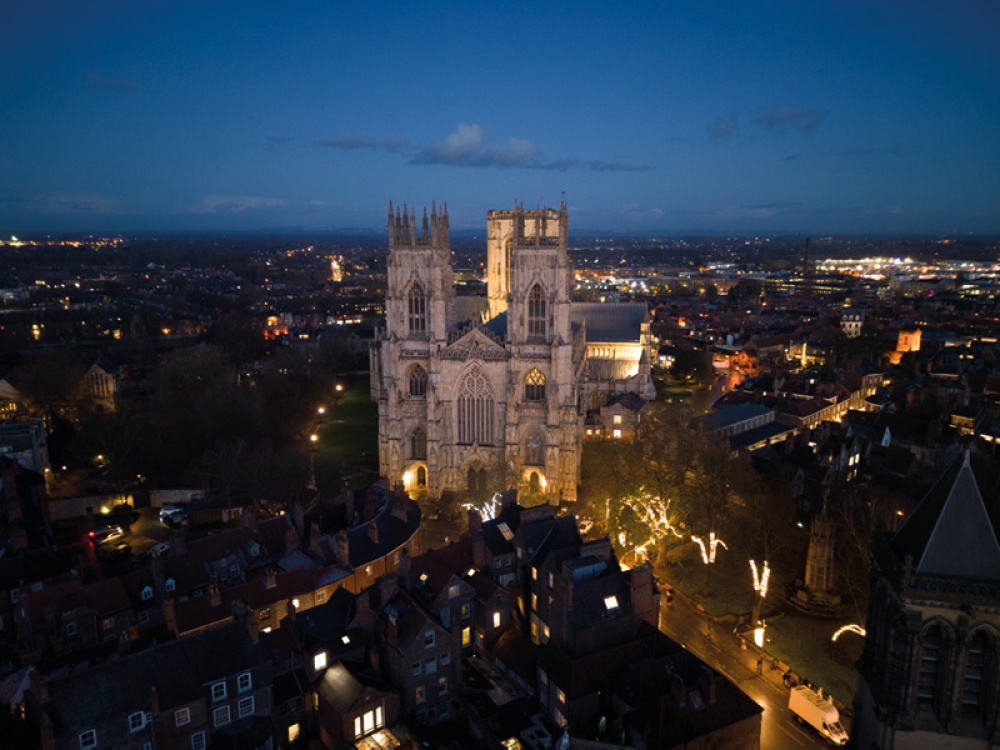
When a devastating fire took hold of York Minster in 1984, every second counted
After the south transept caught fire in the early hours of 9th July 1984, the community of York quickly came together to do what they could to save the historic structure and its contents. ‘An automatic fire alarm went off at 2.30am and the poor police officer is on his first ever night shift when he hears it,’ Kirsty says. ‘The firefighters arrive just four minutes or so after the alarm is raised, but the fire takes hold of the south transept.’
But it’s not only the firefighters who arrive to help. ‘Staff and clergy who live around the Minster begin rushing into the building and getting precious silver, furniture and textiles out in case the fire spread. Some of the works team arrived to guide the firefighters through the roof spaces and up the different voids in the spaces beside the roof,’ she says. ‘By 3am about half of the roof is alight and at that point they’re also putting water onto the Rose Window to try and cool it and reduce the impact of thermal shock. There are incredible quotes about molten lead dripping down from the roof.’
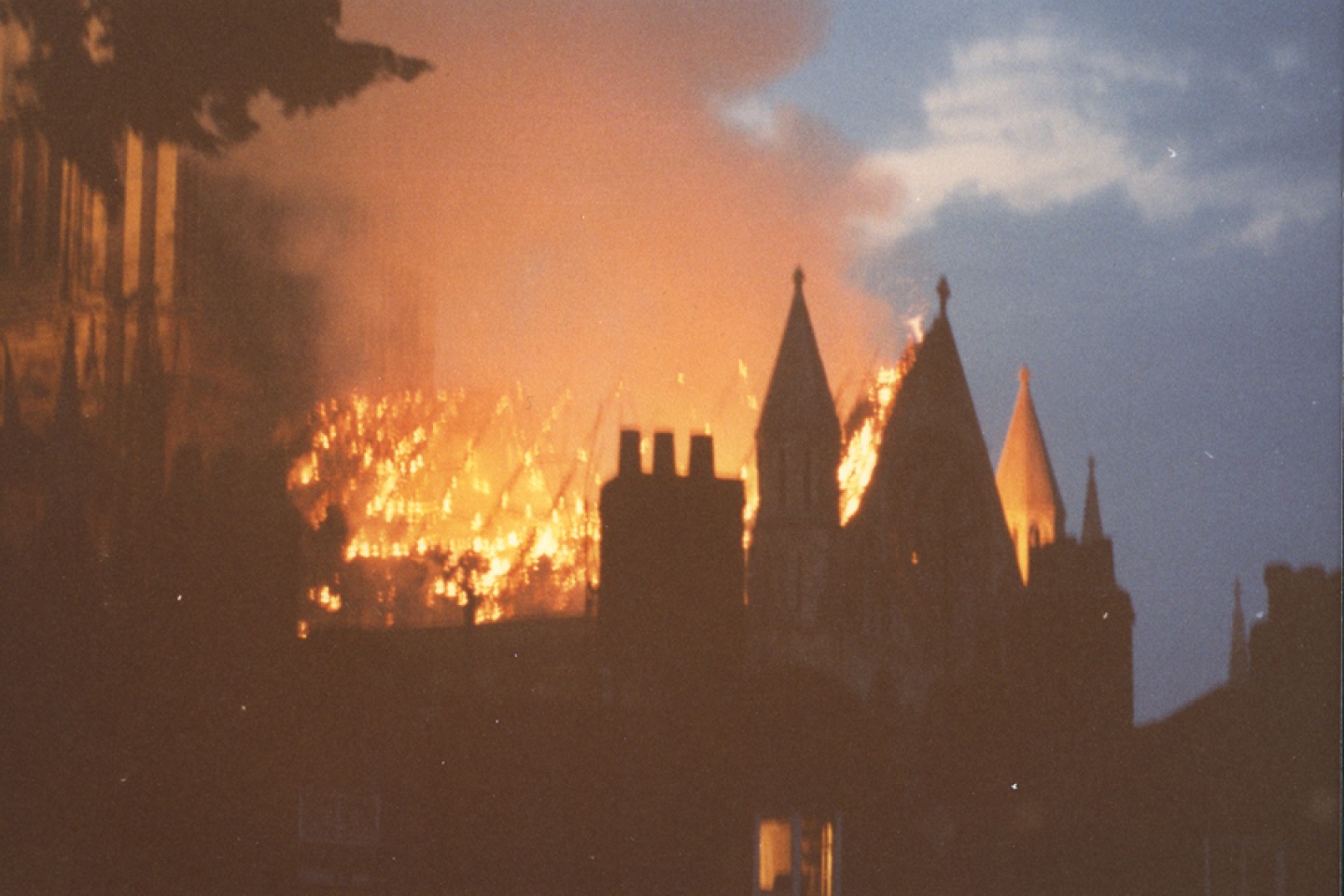
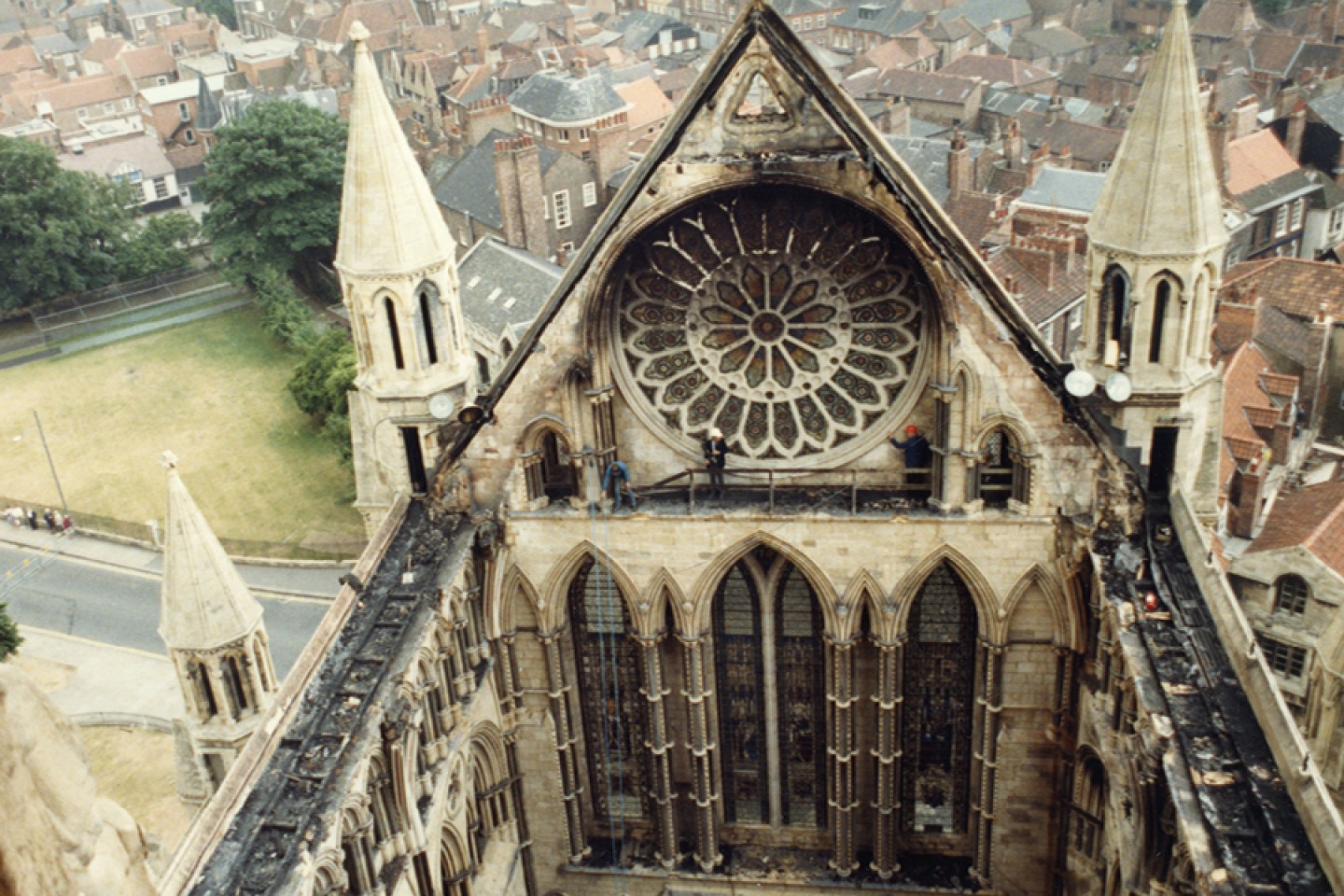
After the difficult decision was made to use the jets of water to collapse the timber frames and prevent the fire from spreading, by 5.30am the fire was under control, but the devastation left behind was clear to see. ‘It was really significant. There’s a report on the clean up operation which makes the point that the whole Minster was affected by soot, ash and smoke damage, but immediately in the south transept there’s all the damage that was caused from the roof falling and water damage from putting out the fire,’ says Kirsty. ‘There are some incredible pictures of the next day and the archaeologists set up a grid system across the top of all the timbers to record what had actually come down (more than 1,000 pieces). But there are also some great near-miss stories of monuments that should have been hit on the way down but were just out of the way.’
After the fire, a five-year restoration plan was quickly put into place (and finished a whole year ahead of schedule) including work from masons, joiners, and painters – though it did not come without setbacks. ‘At first a big temporary roof was constructed, and just before they managed to do that there was a torrential downpour of rain.They’d just cleared everything up and the south transept was semi-flooded again.
‘Alongside that, you’ve got the restoration of the Rose Window which was overseen by the York Glaziers Trust. The window stayed in-situ during the fire but it cracked in thousands of places,’ Kirsty says. ‘So with a very temporary scaffold in place, they climbed up six times a day to check on it and do remedial work. It was then plated and the ancient glass was sandwiched between two sheets of modern glass and the three pieces were all bound with new lead, so there’s now a double layer of protection.’

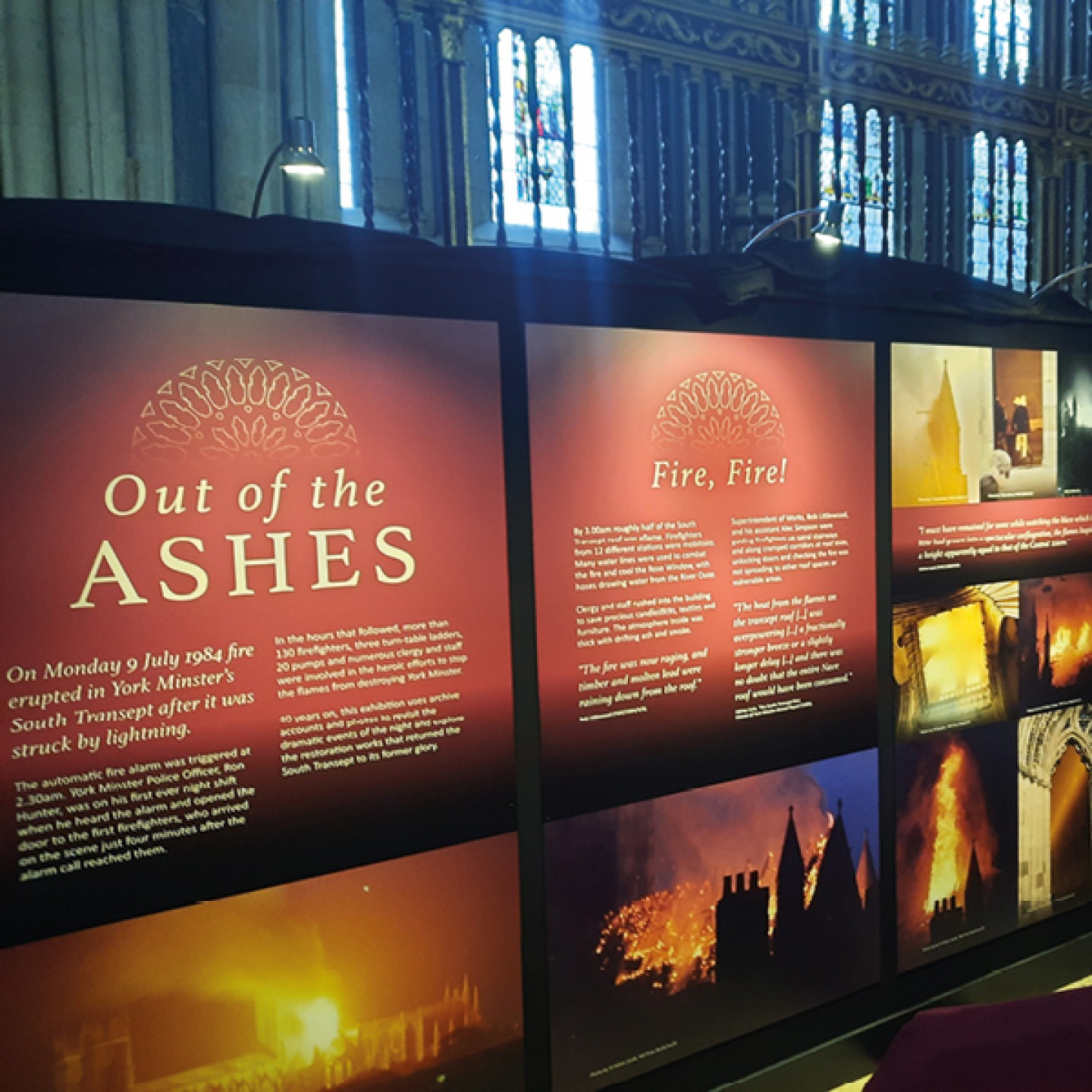
‘It’s been quite an emotional experience putting this exhibition together because it is still so strongly felt in the collective living memory of the Minster and York’
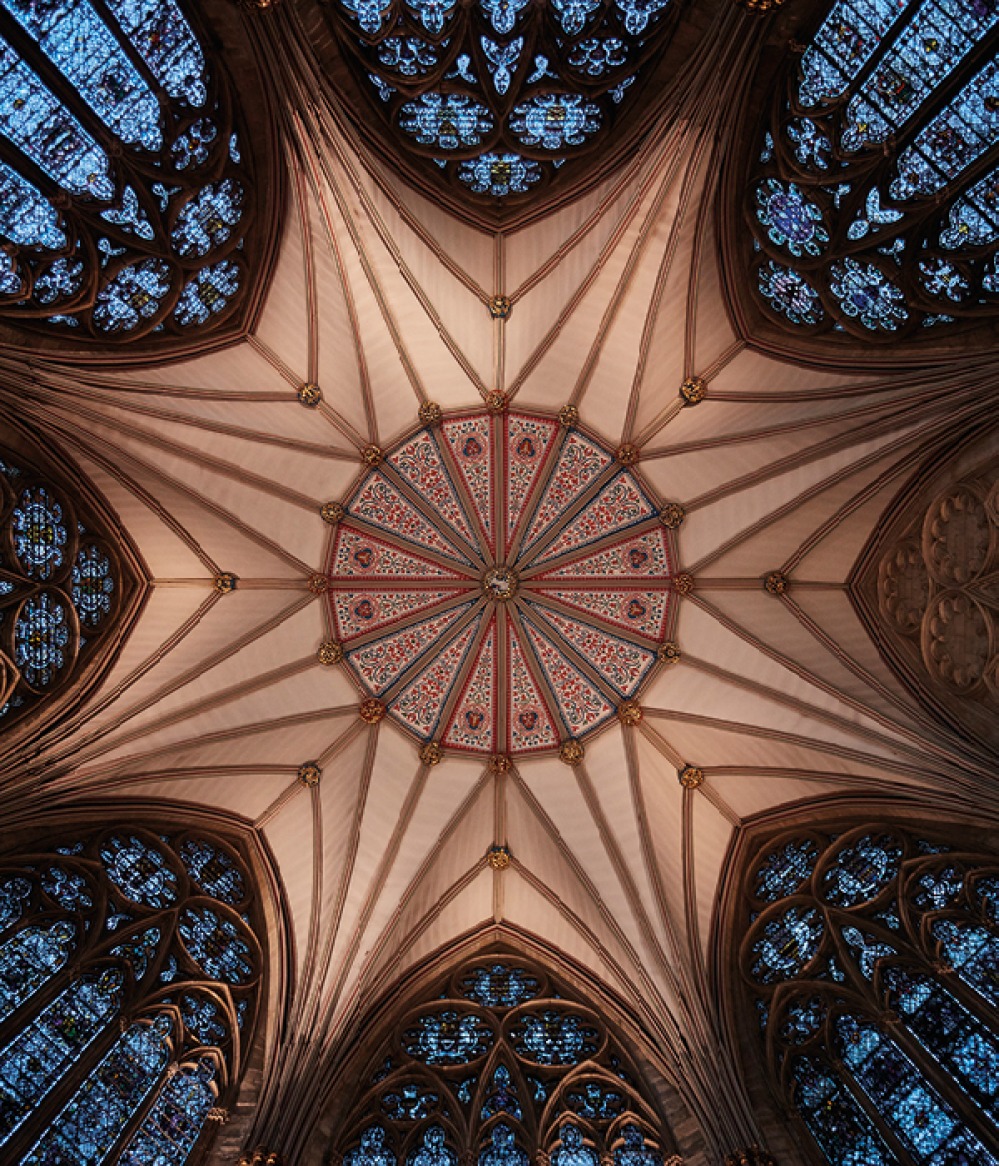
This year’s exhibition to mark the anniversary of the fire draws heavily on archive material to bring the events of that evening and the subsequent restoration work back to life for visitors. ‘There’s an exhibition in the north transept opposite where the fire took hold with lots of photos and stories told in the words of the people who experienced it,’ Kirsty explains. ‘You can also see signs of the fire in the south transept and accompanying that there’s a photographic trail called On This Spot inside and outside, with a QR code at each spot showing you archive photos of what that spot looked like during or just after the fire and during the restoration.
‘It will take people back to that time and our guides are also doing special fire tours. Tickets are on sale now for a light show called Phoenix in the autumn which will bring the fire to life using projection.’
For Kirsty and the team who have put the exhibition together, the hope is that the public can get an appreciation for how the community stepped up to help all those years ago. ‘I think for me, I’ve absolutely loved the tiny details within the story. There are reports about the clean up operation, but it’s the smaller things like there were volunteers on holiday in the city who just turned up and started sweeping instead of having their holiday, and someone donated a huge bag of Terrycloth towels and nappies (there’s this great quote about how it was brilliant because they’re so absorbent for mopping up). The textiles and things that were taken out for their protection were put into clergy houses and again there’s a great detail of how the Dean’s cat had a little nap on top of some of them amongst all the chaos.’ There was also a Blue Peter competition to design the new roof bosses to be carved, and Kirsty says the participants still bring their kids back to see them.
‘It’s been quite an emotional experience putting this exhibition together because it is still so strongly felt in the collective living memory of the Minster and York,’ she explains. ‘I think a lot of people now perhaps vaguely remember the fire, but I’d like them to find out a detail they didn’t know, or take something away about the community effort that it took to get it back to how it is today.’









